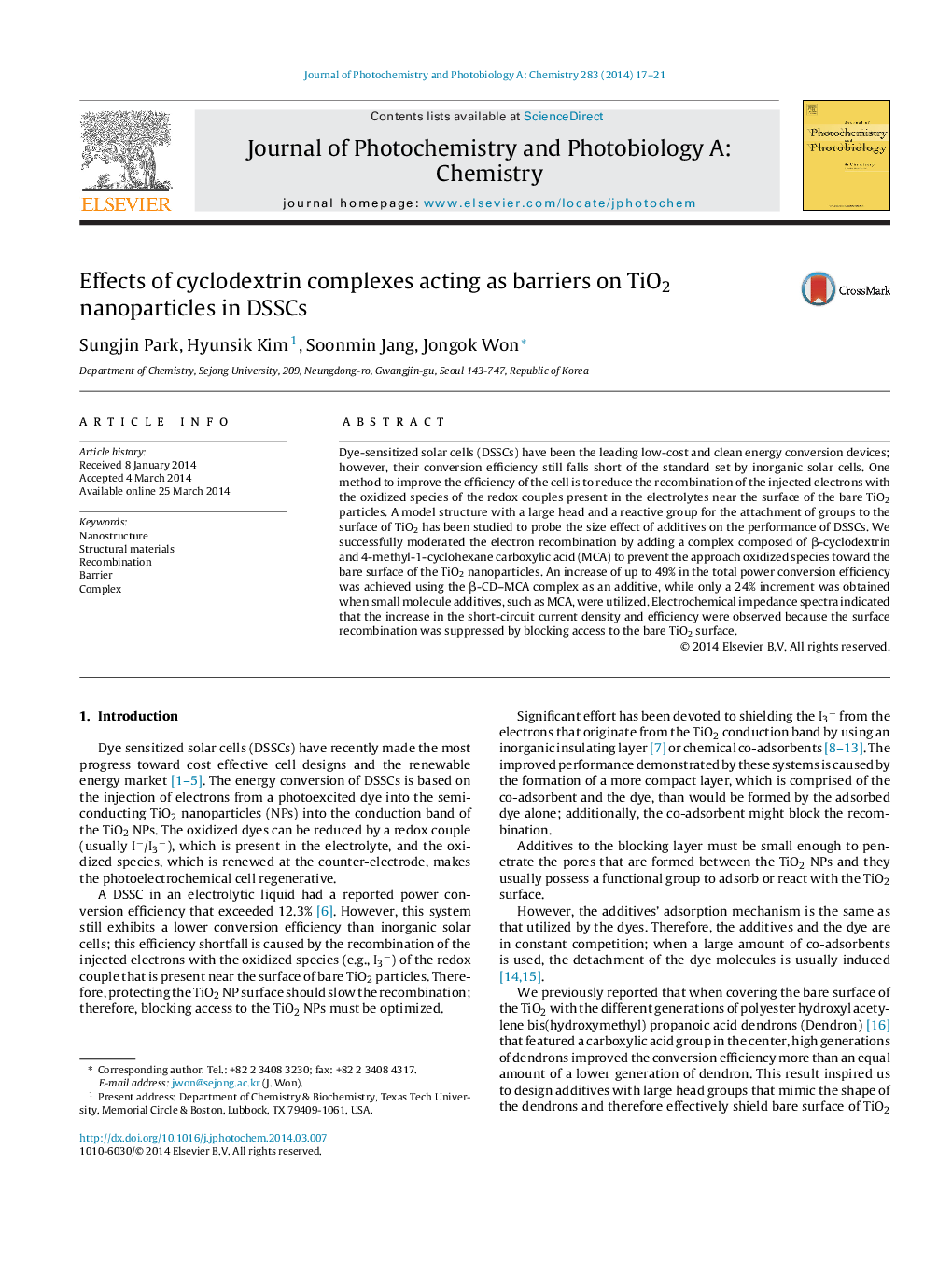| Article ID | Journal | Published Year | Pages | File Type |
|---|---|---|---|---|
| 26607 | Journal of Photochemistry and Photobiology A: Chemistry | 2014 | 5 Pages |
•We examined the size effects of additives to dye sensitized solar cells.•We chose a model structure with large head and reactive groups for the additives.•The binding interaction between cyclodextrins and aromatic substrates was used.•An increase of up to 49% in total power conversion efficiency was achieved.
Dye-sensitized solar cells (DSSCs) have been the leading low-cost and clean energy conversion devices; however, their conversion efficiency still falls short of the standard set by inorganic solar cells. One method to improve the efficiency of the cell is to reduce the recombination of the injected electrons with the oxidized species of the redox couples present in the electrolytes near the surface of the bare TiO2 particles. A model structure with a large head and a reactive group for the attachment of groups to the surface of TiO2 has been studied to probe the size effect of additives on the performance of DSSCs. We successfully moderated the electron recombination by adding a complex composed of β-cyclodextrin and 4-methyl-1-cyclohexane carboxylic acid (MCA) to prevent the approach oxidized species toward the bare surface of the TiO2 nanoparticles. An increase of up to 49% in the total power conversion efficiency was achieved using the β-CD–MCA complex as an additive, while only a 24% increment was obtained when small molecule additives, such as MCA, were utilized. Electrochemical impedance spectra indicated that the increase in the short-circuit current density and efficiency were observed because the surface recombination was suppressed by blocking access to the bare TiO2 surface.
Graphical abstractFigure optionsDownload full-size imageDownload as PowerPoint slide
